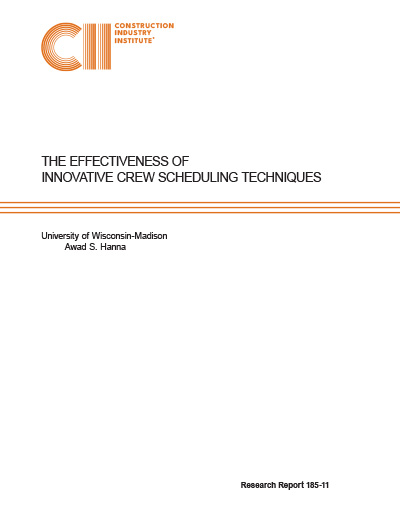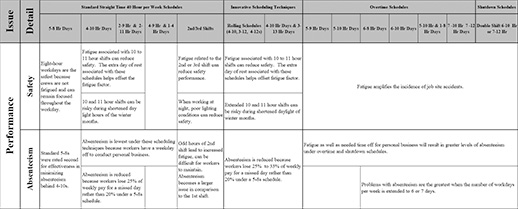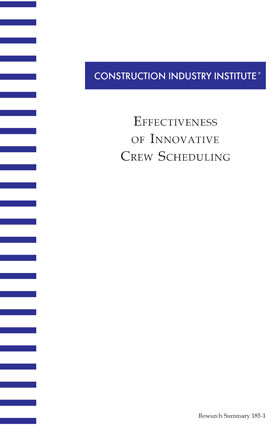
The Effectiveness of Innovative Crew Scheduling Techniques
Several crew scheduling options are available to contractors and owners when they need to complete a project on time or compress or accelerate a schedule. Techniques such as overtime, shift work, rolling or straight four-ten hour days, and other innovative schedules each have their own set of unique benefits and requirements for proper application.
The focus of this research project was to document the impacts and proper applications of various crew scheduling techniques as used in the construction industry. The research had five main objectives:
- Determine what previous literature exists on the topic of crew scheduling techniques in the construction industry.
- Seek the input of contractors experienced in the use of innovative crew schedules to document the proper applications and the conditions that must be met for successful use of specific scheduling techniques.
- Determine the impact of several crew scheduling techniques on labor productivity, project cost, project duration, absenteeism rates, and safety.
- Quantify the impact of several crew schedules on labor productivity to show the relationship between the labor efficiency of various scheduling options implemented over an extended time period.
- Develop a tool to aid industry professionals in the selection of the crew scheduling technique(s) that match the specific conditions and requirements of a project.
The information presented in this research report was collected from two main sources. First, industry opinions regarding several crew scheduling techniques were obtained through the use of questionnaires delivered to a diverse group of nearly 1300 contractors, owners, and labor union representatives throughout the United States. A statistical analysis of the questionnaire responses allowed a comparison of the scheduling techniques based on respondents’ perceptions of the schedule impacts on productivity, project cost, project duration, absenteeism, and safety. The questionnaires also collected written comments on schedule characteristics and gathered suggestions on the proper application of the schedules. The second source of information came in the form of actual project productivity data collected from over 100 projects completed with a variety of crew scheduling techniques. The collected project productivity data was analyzed through statistical hypothesis testing and the use of linear regression techniques. The hypothesis testing resulted in a direct comparison of the average productivity levels of different crew scheduling options. The developed regression model shows the relationship between workforce productivity, the average number of hours worked per crewmember per week, and total project work hours. The regression model can be used before, during, or after the project to estimate the productivity gain or loss associated with the crew schedule used.
A summary of the information collected through the course of this research is organized in a tabular format at the end of the document. The table is intended to aid construction professionals in the selection of a crew scheduling technique that will meet the requirements of a specific project.



